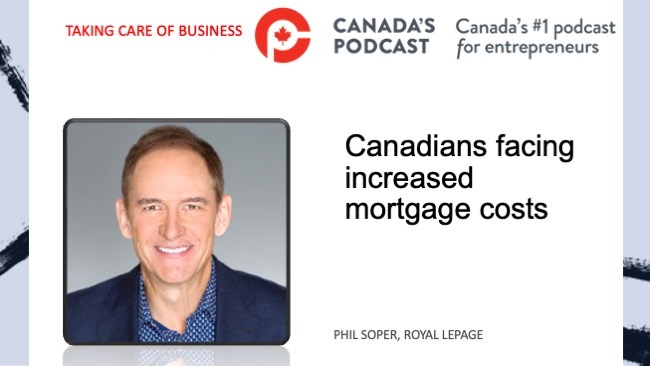Real gross domestic product (GDP) in Canada grew 0.3% in April, after being essentially unchanged in March. Both goods-producing (+0.3%) and services-producing (+0.3%) industries contributed to the growth with 15 of 20 sectors increasing in the month, reported Statistics Canada on Friday.

Jamal Yahyayev
The federal agency said wholesale trade, mining, quarrying, and oil and gas extraction and manufacturing were the largest contributors to growth in April after recording declines in the previous month. Following two consecutive monthly decreases, retail trade was also among the top drivers of growth in April, led by food and beverage retailers and gasoline stations which rebounded from declines recorded in previous months.
“Advance information indicates that real GDP rose 0.1% in May. Increases in manufacturing, real estate and rental and leasing and finance and insurance were partially offset by decreases in retail trade and wholesale trade. Owing to its preliminary nature, this estimate will be updated on July 31, 2024, with the release of the official GDP by industry data for May,” it said.
The report said wholesale trade expanded 2.0% in April, which more than offset the decrease in March, with most subsectors posting increases in April. Motor vehicle and motor vehicle parts and accessories wholesaling (+8.0%) led the growth, with its largest monthly growth rate since October 2021. The motor vehicle industry group was the largest contributor to growth in the sector in April 2024, and increased activity coincided with an increase in motor vehicle manufacturing as well as an increase in imports of passenger cars and light trucks.
Personal and household goods rose 3.5% in April, further contributing to the sector’s growth, as higher personal goods, toiletries and cosmetics, and pharmaceutical wholesaling led the gain, added StatsCan.
“Mining, quarrying, and oil and gas extraction rose 1.8% in April in large part due to increases in support activities for mining and oil and gas extraction (+6.9%). The rise was buoyed by broad-based expansion in all forms of supporting activities,” added the report.
“The oil and gas extraction subsector grew 1.2% in April, up for the sixth time in seven months, with the increase largely driven by oil sands extraction. The subsector expanded 2.1% in April, led by higher synthetic crude production and crude bitumen extraction in Alberta. Oil and gas extraction (except oil sands) also contributed to the gain, rising 0.4% in April, as higher oil extraction off Newfoundland and Labrador’s coast more than offset lower oil extraction in Western Canada.
“Mining and quarrying (except oil and gas) increased 0.3% in April after contracting in March. Growth in metal ore mining (+1.6%) and coal mining (+2.4%) was partially offset by a decrease in non-metallic mineral mining and quarrying (-4.0%) as temporary shutdowns at potash and salt mines led to lower production in the month.”
“The slowing in May GDP growth suggests that the reacceleration in the inflation during that same month likely reflected supply issues or volatility in the data, rather than demand pressures. We continue to view next week’s employment data, and next month’s CPI figures as more important in determining whether the Bank of Canada will trim interest rates by a further 25bp at the late-July meeting.”
Marc Ercolao, Economist, with TD Economics, said GDP data for April came in bang on with expectations, which has kept growth tracking for the second quarter steady.
“The Canadian economy indeed started Q2 on solid footing, with early tracking suggesting trend-like growth for the quarter. This would roughly match growth in the first-quarter, which came in at 1.7% quarter-on-quarter annualized,” he said.
“The Bank of Canada is likely satisfied with today’s report. On one hand, there doesn’t appear to be signs of a reacceleration in growth. On the other, the Bank should take comfort that its Q2 growth forecast is materializing so far. The stability in the GDP reading will allow the Bank of Canada to keep its focus more squarely on the evolution of inflation, especially with the start of its interest rate easing cycle underway. We believe that the Bank of Canada will hold off on another interest rate cut next meeting, opting instead to move rates lower in September, which will allow them to assess both inflation (and growth) dynamics until then.”

Mario Toneguzzi
Mario Toneguzzi is Managing Editor of Canada’s Podcast. He has more than 40 years of experience as a daily newspaper writer, columnist, and editor. He was named in 2021 as one of the Top 10 Business Journalists in the World by PR News – the only Canadian to make the list. He was also named by RETHINK to its global list of Top Retail Experts 2024.
About Us
Canada’s Podcast is the number one podcast in Canada for entrepreneurs and business owners. Established in 2016, the podcast network has interviewed over 600 Canadian entrepreneurs from coast-to-coast.
With hosts in each province, entrepreneurs have a local and national format to tell their stories, talk about their journey and provide inspiration for anyone starting their entrepreneurial journey and well- established founders.
The commitment to a grass roots approach has built a loyal audience on all our social channels and YouTube – 500,000+ lifetime YouTube views, 200,000 + audio downloads, 35,000 + average monthly social impressions, 10,000 + engaged social followers and 35,000 newsletter subscribers. Canada’s Podcast is proud to provide a local, national and international presence for Canadian entrepreneurs to build their brand and tell their story





